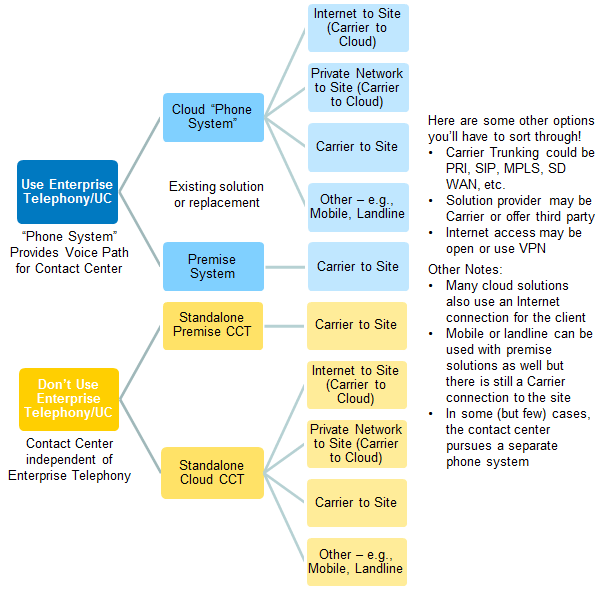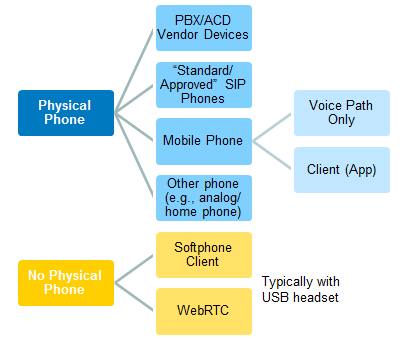If you are in the throes of platform replacement, you may find the evaluation and selection process daunting. There are many vendors and a dizzying array of options from which to choose. And if your need for new contact center technology functions pushes you into a PBX upgrade, things can get even more complicated.
There are multiple types of cloud solutions – private (single tenant), public (multitenant), and hybrids that put some hardware on site. A premise-based solution is still a viable option despite all the market hype trying to make everyone think otherwise. Long time players and relative newcomers offer one approach or multiple. Some vendors offer PBX functionality in addition to contact center technology, but some don’t.
As voice communication declines and alternative communications rise, you may be tempted to think that the contact center doesn’t need to be on a PBX. Most cloud vendors don’t even use that term anymore. They call it Unified Communications, Unified Communications as a Service, business communications, or just a phone system. Then there is Microsoft’s Skype for Business that can be integrated with the desktop applications most people use all day – Outlook, the Office Suite, etc. They too offer PBX type functionality.
Despite any claims to the contrary, most companies and contact centers still need critical voice functionality, including voice mail, conferencing, 911/emergency, and maybe even attendants and directories. And they still use call handling features like park, call forward, transfer, call waiting, and music on hold. Call them what you want, but these are PBX features, even if they are commoditized and more about cost and convenience than features and functions. These core telephony decisions need to be addressed during the selection process.
As you consider options for the voice path and the phone (see diagrams below), not every combination makes sense. For example, you wouldn’t do a cloud phone system and use it for the voice path for a premise ACD. But with the combinations and permutations, not to mention differences with various vendors (they don’t all offer each option), your vision may begin to blur. Choosing “cloud” does not mean no PBX or no phones. Discomfort with internet connectivity doesn’t rule out cloud options. And a need for remote/home agents doesn’t rule out any options.
Voice Path Options

Phone Options

While the pursuit of new solutions – whether contact center-focused or enterprise-wide – can be exciting, it’s easy to get wrapped around the axle. Vendors may try to distract you with all of their “shiny objects” in hopes that you’ll become enamored of the solution and short-change the discernment process.
Like it or not, your contact center is still a call center. It needs voice communication that is reliable and high quality but adaptable to today’s varying staffing models (e.g., home agents, remote agents, outsourcers, etc.). And voice must be available when needed – even in a disaster. Don’t neglect this critical part of your contact center success.
Admittedly, the plethora of options for the voice path and phones can add to the confusion. That’s all the more reason to pay attention to the fundamentals of voice communications and define the options (and associated vendors and solutions) that fit best for your operations, IT, and frontline staff.
For more information and insights, download What’s Your Path and Device for Voice Communications? »
